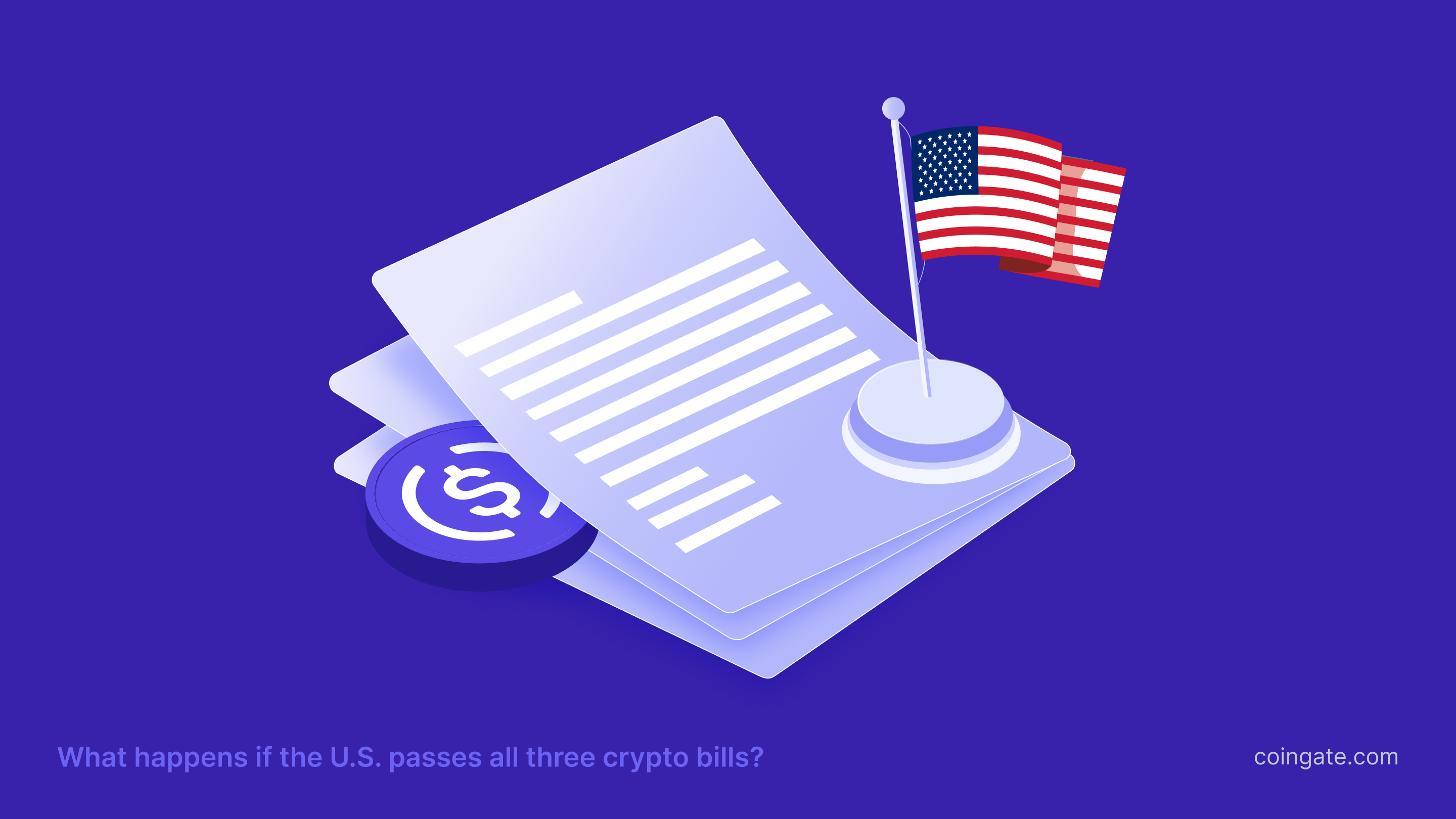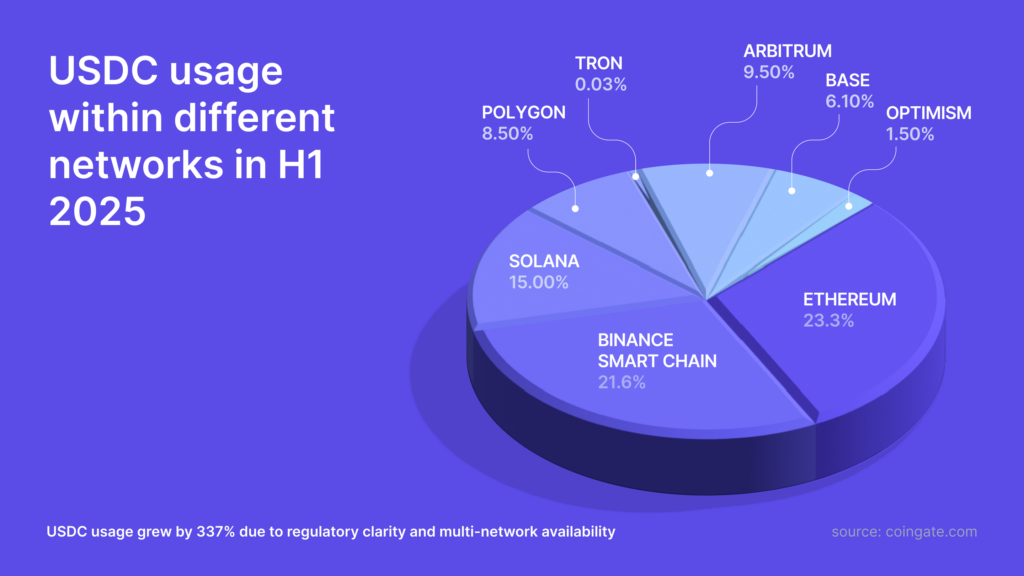
What Happens When the U.S. Passes the GENIUS, CLARITY, and Anti-CBDC Acts?

The United States is on the verge of making its biggest crypto policy shift to date.
Three pivotal bills are lined up in Congress — and once they pass, they could fundamentally reshape how crypto assets, stablecoins, and digital dollars operate not just in the U.S., but globally.
While procedural votes may delay things temporarily, momentum is building. So let’s explore what happens after these three bills become law — and why this matters for businesses, payment providers, and the future of stablecoin adoption.
A Quick Recap: The Three Bills
- GENIUS Act (Guiding and Establishing National Innovation for U.S. Stablecoins)
- Establishes a formal regulatory framework for stablecoins
- Requires issuers to maintain 1:1 fiat reserves
- Opens the door for non-bank institutions to issue regulated stablecoins
- CLARITY Act (Digital Asset Market Clarity Act)
- Divides oversight between the SEC (for securities) and CFTC (for commodities)
- Excludes stablecoins from SEC authority
- Ensures crypto regulation is shaped by Congress, not through court rulings
- Anti-CBDC Surveillance State Act
- Prohibits the Federal Reserve from issuing a central bank digital currency (CBDC)
- Blocks the Fed from using a CBDC for monetary policy
- Sends a clear message: digital dollars should come from the private sector
Why This Would Be a Turning Point
Together, these bills form the first comprehensive federal crypto framework in the U.S. That matters — because it answers the three most important questions businesses and institutions have been asking:
Is crypto legal?
Who’s in charge?
Can we build on it safely and at scale?
Once passed, the answer to all three becomes a confident “yes.” And that unlocks a new chapter in the crypto economy.
What to Expect Next
1. A Stablecoin Boom — Led by Major Institutions
Regulated stablecoins become the “digital dollars” of choice. With a clear legal path in place, we’ll likely see:
- JPMorgan, Citigroup, and other banks issue deposit-backed tokens
- Retail giants (like Amazon or Walmart) experiment with branded stablecoins
- Fintechs offer stablecoin-native wallets, rewards, and payouts
USDC, already gaining market share post-MiCA in Europe with its usage increasing by 337% over a year at CoinGate, would also get a second wind in the U.S. — especially with added trust and institutional backing.

We already support multi-chain stablecoin payment acceptance and offer payouts, settlements, and refunds in stablecoins.
With demand growing, we have expanded stablecoin support across networks like Solana, Tron, Polygon, and Base — wherever real usage is happening.
If you also want to start using stablecoins in your line of work, consider signing up for CoinGate.
2. Institutional Entry Accelerates
The CLARITY Act would end years of legal ambiguity that kept many firms on the sidelines. Once it’s law, traditional institutions — asset managers, fintech platforms, payment companies — can enter the market without fear of stepping into a regulatory grey zone.
Expect to see:
- More public companies holding crypto on their balance sheets
- Payment processors offering native crypto checkout
- Crypto rails being used behind the scenes to settle B2B transactions, treasury flows, and global remittances
This means a stronger ecosystem, better infrastructure, and more liquidity — all of which reduce costs, improve conversion rates, and enable faster cross-border commerce.
3. CBDCs Take a Back Seat — Private Innovation Takes the Wheel
With the Anti-CBDC Act in place, the U.S. effectively opts out of a government-issued digital currency, putting another nail in the coffin in CBDCs vs stablecoins discussions.
Instead, it signals that the private sector should lead innovation in digital money.
That means:
- No national digital dollar from the Fed
- More freedom for companies to experiment with programmable money, smart contracts, and tokenized payments
- Stronger demand for interoperable solutions like stablecoins and crypto-native payouts
This reinforces the model we’ve been building for years — flexible, private-sector crypto payment rails that businesses can adopt globally without needing permission from a central bank.
Bottom Line: A New Era for Crypto Payments
If these bills pass — and all signs point to “when,” not “if” — the U.S. will finally have a clear, workable legal foundation for crypto.
The result?
More adoption. More legitimacy. More innovation.
And for merchants and businesses — new ways to:
- Reach global customers
- Reduce settlement costs
- Move money faster and more transparently
At CoinGate, we’re already ready for this future. If your business is still on the sidelines, now’s the time to get in the game, and the best way to do it is with CoinGate. Let’s build the next generation of payments — together.
Accept crypto with CoinGate
Accept crypto with confidence using everything you need in one platform.

